Bangladesh-India relations: An increasingly complicated friendship

Contemporary geopolitical relations between Bangladesh and India are based on a few age-old principles. When discussing Bangladesh-India relations, we must first acknowledge that India's backing of Bangladesh in 1971 was the most important external factor in Bangladesh's independence. We must also recognise that the two neighbours are entwined in an unusual geographic reality, in which Bangladesh is surrounded on practically all sides by India and shares with it 54 rivers that flow from the Himalayas to the Bay of Bengal. These are the primary principles that underpin any Bangladesh-India diplomatic cooperation and dialogue. However, a critical component to bolster Bangladesh-India relations would be a significant strategy or initiative from either of the two countries to strengthen people-to-people links between them.
The cultural exchanges between Bangladesh and India are mostly confined within West Bengal and northeast India. Perhaps it is assumed that the existing cultural ties between the neighbouring countries are sufficient to supplement a deliberate and robust people-to-people diplomacy model. However, according to a foreign relations perception poll on Bangladeshis by US non-profit The International Republican Institute (IRI), there was a significant increase in distrustful sentiments towards India from 2019 to 2023. When asked in the 2019 poll whether they believed India was having a positive or negative impact on Bangladesh, 52 percent Bangladeshis voted for "very positive" and "somewhat positive," 20 percent opted for "somewhat negative" and "very negative," and the remainder did not respond. When asked the same question in 2023, the positive distribution was 50 percent, while the negative increased to 37 percent.
There is still a lot of goodwill among the Bangladeshi people for what India did 52 years ago. However, it seems that India might be coasting along on that goodwill without any significant attempts to improve its image in the eyes of Bangladeshis. New Delhi appears unconcerned about the ramifications of the spillover of communally divisive discourse, from the country's internal politics to international affairs. Relations have also been strained as a result of the failed agreement to share Teesta River's waters (which was ready to be signed in September 2011), fears over the transboundary effects of India's National Register of Citizens and the Citizenship (Amendment) Act, as well as all the highly publicised instances of border killings of Bangladeshi citizens. The lack of Indian media coverage and analysis of these factors always results in regular Indian citizens being taken aback when faced with the antagonism harboured by a country they believe their country had helped liberate.
The reality of the matter is that there have been a lot of events after the Liberation War that enabled anti-India sentiments to take root in Bangladesh. One such example is the Farakka Barrage issue, which many believe was the first major cause behind grassroots-level anti-Indianism rising in the late 1980s. The ecological effect of the barrage was so bad that Bangladesh was forced to submit a formal protest against India to the UN General Assembly, which issued a consensus statement on the matter on November 26, 1976. Yet, the issue was never fully resolved. The ramifications of this have lingered for decades, but the topic is rarely discussed or examined in depth by Indian media.
The emerging market of a rapidly developing Bangladesh and the geostrategic importance of the country as a land-bridge between South and East Asia are all factors that India needs to take advantage of to fulfil its greater regional and global geopolitical ambitions. Of course, as India carries the title of being the largest democracy in the world, it must also be vocal against all anti-democratic activities in its neighbouring nations. However, diplomatic ties must flourish from both the top-down and bottom-up. India has to explore people-to-people diplomatic tools for a more sustainable relationship.
In fact, before 2008, Bangladesh had very rarely been covered in-depth by India's print and electronic media. When we were mentioned, the dominant images were of Bangladesh being a "wasteland" marked by utter poverty, natural disasters, religious bigotry and fundamentalism, and a den of anti-Indian forces and a major source of infiltrators. There is truth to all these representations. On the one end, there is the scandalous 10-truck illegal arms and ammunition haul incident of 2004. On the other, there are the allegations of Indian sponsorship of separatists in the Chittagong Hill Tracts (CHT). The negative impressions go both ways. But if these were the only images chosen to depict a close neighbour, with little context given, there would surely be a long-lasting impact on the collective psyche of both Bangladeshi and Indian nationals. Only after the incumbent administration took office in 2009 was there a noticeable shift in Bangladesh-India relations, mirrored in the Indian media's increasingly nuanced and glowing analysis of Bangladesh. However, even now, Indian media, in regard to any matter concerning Bangladesh, has often attempted to stain its sovereign entity.
The prevalent notion among the Bangladeshi people currently is an assumption of Indian interference in Bangladesh's politics. In 2013, when the BNP and other opposition parties were preparing to boycott the general election in order to seek an election-time caretaker administration, then Indian Foreign Secretary Sujatha Singh visited Bangladesh. During her two-day visit, it is alleged that Singh successfully prevented HM Ershad and his party from boycotting the election. After spending 22 hours in an undisclosed location, Ershad met with Singh and stated that the Jatiya Party, the third-biggest opposition, would join the election—a move which ultimately granted the election a semblance of legitimacy.
Similarly, former Indian president Pranab Mukherjee stated in his autobiography, The Coalition Years, that in February 2008, Bangladesh army's chief Moeen Uddin Ahmed had gone to India on a six-day visit. During the informal interaction, Pranab Mukherjee impressed upon Moeen Ahmed the importance of releasing political prisoners. Pranab Mukherjee mentioned in his book that all prominent political leaders, including Sheikh Hasina, were imprisoned during the period. According to Pranab, Moeen was apprehensive about being dismissed by Sheikh Hasina after her release, and the Indian president assured Moeen of his security. Not only that, but Pranab Mukherjee also admonished Awami League leaders for not standing by the side of their party leader.
Needless to say, these clandestine events have painted India as having a hand in influencing Bangladesh's internal politics.
Despite the existing negative preconditions, it has to be understood that both Bangladesh and India need each other in order to thrive. The emerging market of a rapidly developing Bangladesh and the geostrategic importance of the country as a land-bridge between South and East Asia are all factors that India needs to take advantage of to fulfil its greater regional and global geopolitical ambitions. Of course, as India carries the title of being the largest democracy in the world, it must also be vocal against all anti-democratic activities in its neighbouring nations. However, diplomatic ties must flourish from both the top-down and bottom-up. India has to explore people-to-people diplomatic tools for a more sustainable relationship.
Often, India has been accused of blacklisting and restricting visas of any foreign intellectuals who offer alternative or challenging viewpoints about its foreign policy. This is definitely not the way to resolve the issues at hand. India must invest in programmes initiated by non-state actors with political goals that are in line with (but independent of) state foreign policy objectives in places where official public diplomacy channels do not exist. This can be done through track 2 diplomacy, peace workshops, youth forums, etc. Crucially, India must also enable—or at least not actively hamper—people's initiatives that challenge governments' policies. Indian policymakers should be cognisant of foreign policy steps which are causing schisms. In this regard, both state-to-state and people-to-people approaches to diplomacy are needed to address and resolve these festering issues. The only way forward is to have open conversations between people to understand what people want—that is, an equal relationship.
Zillur Rahman is the executive director of the Centre for Governance Studies (CGS) and a television talk show host. His X handle is @zillur.
Views expressed in this article are the author's own.
Follow The Daily Star Opinion on Facebook for the latest opinions, commentaries and analyses by experts and professionals. To contribute your article or letter to The Daily Star Opinion, see our guidelines for submission.

 For all latest news, follow The Daily Star's Google News channel.
For all latest news, follow The Daily Star's Google News channel. 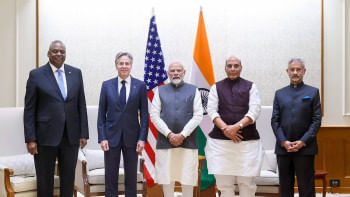
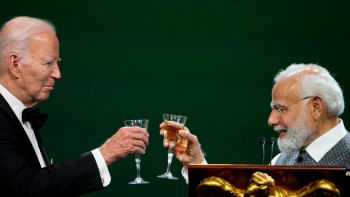


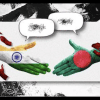
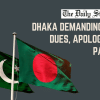

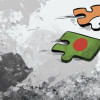



Comments